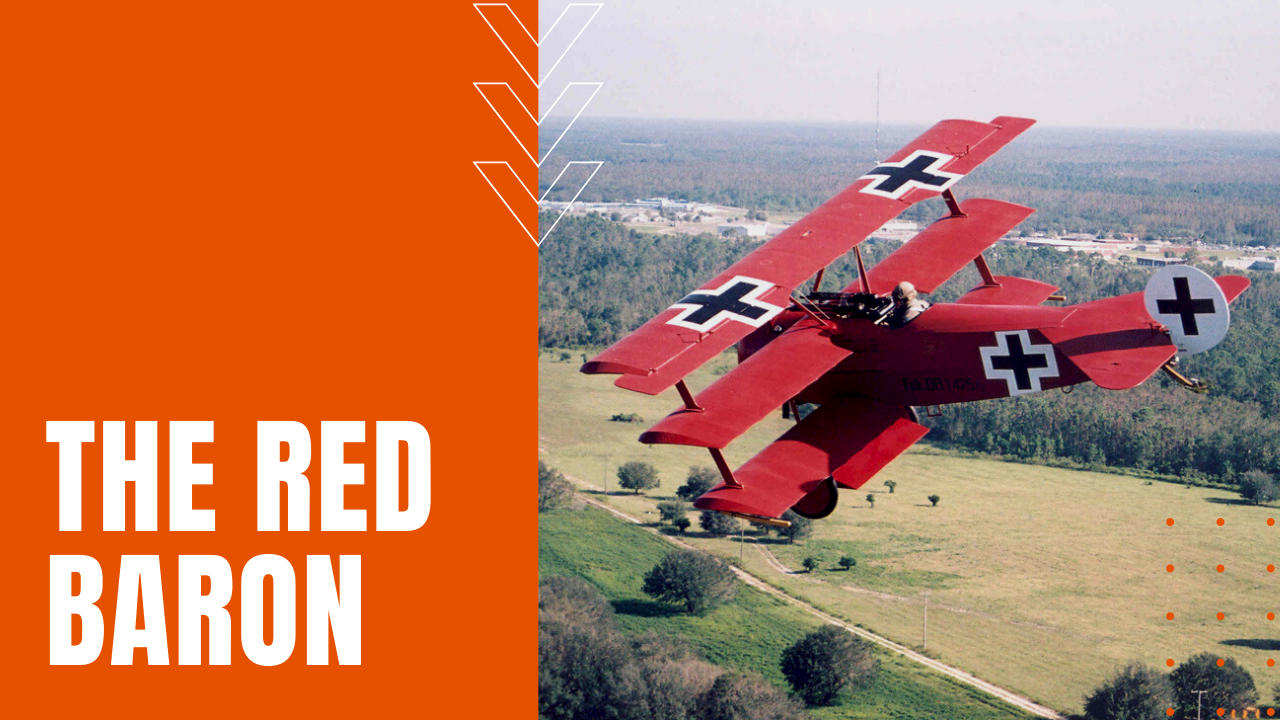Baron von Richthofen: The Red Baron

Born into nobility in May of 1892, Baron Manfred von Richthofen saw action with a cavalry regiment in both the Eastern and Western Fronts at the beginning of World War One, but when his unit was reassigned to supply duty in the trenches, he asked his commanding officer for a transfer to the Imperial German Air Service, prompting Richthofen to complain that he didn’t sign up for military duty—in his words—“to collect cheese and eggs.”
The Red Baron is Born
After he earned his pilot’s license, Richthofen honed his combat skills under German flying ace Oswald Boelcke, making his first aerial victory on September 17th, 1916, followed by four more kills in quick succession to earn the title of “flying ace.”
By early 1917, Richthofen had downed 16 enemy planes, earning Germany’s highest military medal, the Blue Max, as well as the distinction of Germany’s highest-scoring living pilot. After Richthofen was placed in command of his own fighter squadron known as Jasta 11, the air ace had his Albatros D.III bi-plane painted blood red, giving him a slew of distinctive monikers including “le Petit Rouge,” “the Red Battle Flier,” “the Red Knight” and “The Red Baron.”
Most Feared Fighter Pilot
By the spring of 1917, Richthofen became known as the most feared flier in the skies over Europe, with an impossible 52 confirmed victories. While his peers boasted about their feats of white-knuckle acrobatic dogfights, by comparison, Richthofen preferred a more conservative, risk-adverse combat strategy that relied heavily on the aid of his wingmen, allowing Richthofen to drop in on his enemy from above.
As his record and legend continued to grow, in June of 1917, Richthofen now led a four-squadron fighter wing nicknamed “the Flying Circus,” by German reporters, due to the group’s brightly painted aircraft, as well as their ability to deploy rapidly to hotspots along the battlefront.
By August, Richthofen switched to his now-legendary Fokker Dr.1 triplane, and while the air ace endured many close calls during combat, he sustained a fractured skull on July the 6th, 1917, when he was grazed by a bullet during a dogfight.
Who Shot Down the Red Baron?
While Richthofen resumed flying after several weeks of convalescence, many historians maintain that his injury and subsequent headaches weakened both his courage and reaction time, leading to his death on April 21st, 1918, after coming under fire from Australian machine gunners on the ground and Canadian ace Arthur Roy Brown in the air, and while Brown was given official credit for the victory, debate continues over who fired the fatal shot that pierced Richthofen’s abdomen.
After his death at age 25—with 80 confirmed aerial victories to his credit—Allied troops recovered his body and buried him with full military honors, making the Red Baron one of the most lethal adversaries in the early days of aerial combat.
